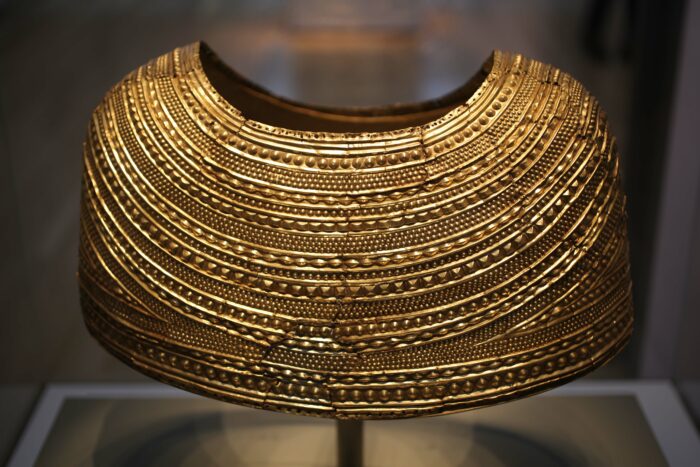This website uses cookies so that we can provide you with the best user experience possible. Cookie information is stored in your browser and performs functions such as recognising you when you return to our website and helping our team to understand which sections of the website you find most interesting and useful.

The power of transforming materials: the Age of Metals
Metals: Pioneering Materials
As humanity understood more about how to extract metals from mineral sources, their transformation began to drive and influence technological advancement through the ages. The study and practice of working with metals, known as metallurgy, can be traced by historians and archaeologists to identify advances in the use of these materials across different civilisations.
The classification system historians use to refer to these advances in prehistoric world are commonly known as the Metals Ages, and can be divided into three periods: the Copper Age, Bronze Age and Iron Age.
Not all civilisations, however, followed the same progression from copper to bronze to iron. In areas rich in iron, but poor in copper, cultures often began working with iron earlier than other cultures, but with limited earlier development using copper or bronze.
Regardless of their chronologies, the Metal Ages was the period when metals superseded stone as a material of choice for many applications, bringing with it the rise of new ideas, trades, migrations, and societies.

The Mold Gold Cape is a ceremonial garment produced from a single ingot of gold. The cape was produced in the British Bronze Age between 1900-1600 BC
(‘Mold Cape’ image by GENI – Licensed under CC BY-SA 3.0)
The Three Periods
The Copper Age
The Copper Age is defined by the abundance and nearly exclusive use of copper. Although the earliest evidence of copper manipulation from native ores or for decorative purposes predates the beginning of the Copper Age, conventionally, the Copper Age starts around 5,000 BC (about 7,000 years ago) and ended around 3,500 BC (about 5,500 years ago) depending on the region.
The Bronze Age
The Bronze Age is a period characterised by the widespread use of bronze. Conventionally, it starts around 3,500 BC (about 5,500 years ago) and ends around 1,200 BC (around 3,200 years ago) depending on the region. Bronze is a metal alloy1 mostly composed of copper and tin, alongside small amounts of some other metals that are often added.
The Iron Age
The Iron Age, resulting from the development of iron technology, is thought to have started around 1,200 BC (about 3,200 years ago) and it ended in different periods depending on the region.

Footnotes
1 An alloy is a metallic material composed of two or more chemical elements, in which the main element is a metal.
For example, bronze is a metal alloy mostly composed of copper with the addition of tin. Bronze can also contain small additions of other metals.

